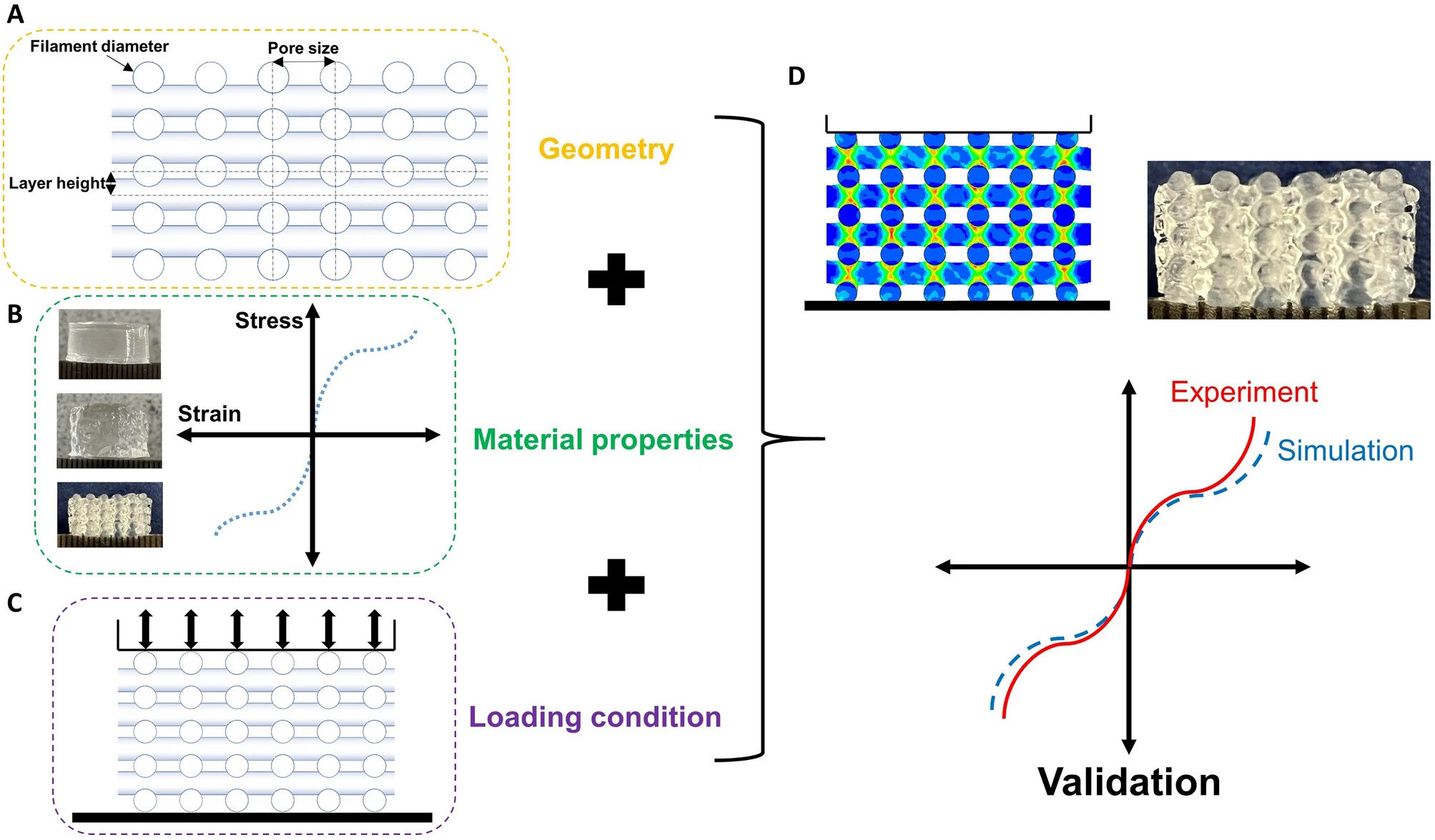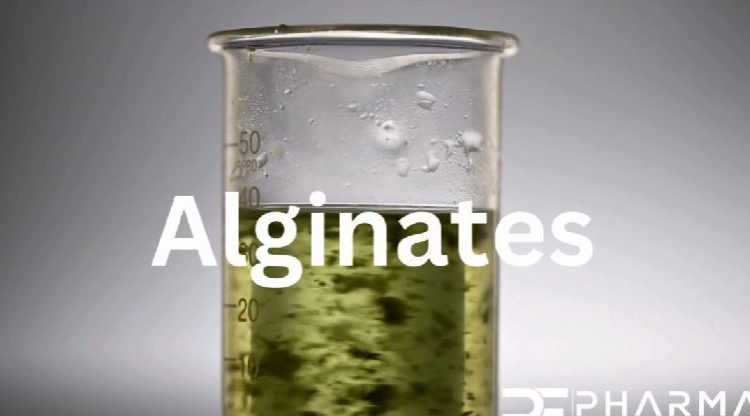Predicting the hyperelastic properties of alginate-gelatin hydrogels and 3D bioprinted mesostructures

Additive manufacturing has been widely used in tissue engineering, as 3D bioprinting enables fabricating geometrically complicated replacements for different tissues and organs. It is vital that the replacement mimics the specific properties of native tissue and bears the mechanical loading under its physiological conditions. Computational simulations can help predict and tune the mechanical properties of the printed construct—even before fabrication. In this study, we use the finite element (FE) method to predict the mechanical properties of different hydrogel mesostructures fabricated through various print patterns and validate our results through corresponding experiments. We first quantify the mechanical properties of alginate-gelatin hydrogels used as matrix material through an inverse approach using an FE model and cyclic compression-tension experimental data. Our results show that the fabrication process can significantly affect the material properties so that particular caution needs to be paid when calibrating FE models. We validate our optimized FE model using experimental data and show that it can predict the mechanical properties of different mesostructures, especially under compressive loading. The validated model enables us to tune the mechanical properties of different printed structures before their actual fabrication. The presented methodology can be analogously extended for cell bioprinting applications, other materials, and loading conditions. It can help save time, material, and cost for biofabrication applications in the future.
Materials and methods
Sample preparation
We used the experimental data of our previous study on multilayer bioprinting of AG hydrogel21. Briefly, alginate (type PH163) was purchased from Vivapharm, JRS PHARMA GmbH & Co. KG, and gelatin (type A, 300 bloom derived from porcine skin) was purchased from Sigma Aldrich (Germany). We prepared the AG bioink with 2% (w/v) and 5% (w/v) ratios of alginate and gelatin, respectively. Then, the printed samples were printed based on a cylindrical model with dimensions similar to molded samples and 100% infill. In addition, for preparing macroporous samples, after designing and preparing their printing files, we set the printing parameters, e.g., nozzle diameter and layer height on the BioX bioprinter (BICO, Sweden) interface. Then, we fabricated the final samples by printing larger macroporous constructs with the height of 4 mm and extracting cylindrical samples by using an 8 mm surgical punch. Finally, we placed all the samples in 0.1 M CaCl2 crosslinking solution for about 10 min and washed them with Hanks’ Balanced Salt Solution (HBSS) purchased from ThermoFisher, Invitrogen, Germany.
Download the full study as PDF here: Predicting the hyperelastic properties of alginate-gelatin hydrogels and 3D bioprinted mesostructures
or read it here
Soufivand, A.A., Budday, S. Predicting the hyperelastic properties of alginate-gelatin hydrogels and 3D bioprinted mesostructures. Sci Rep 13, 21858 (2023).
https://doi.org/10.1038/s41598-023-48711-3
Read more on alginates as pharmaceutical excipients here:


